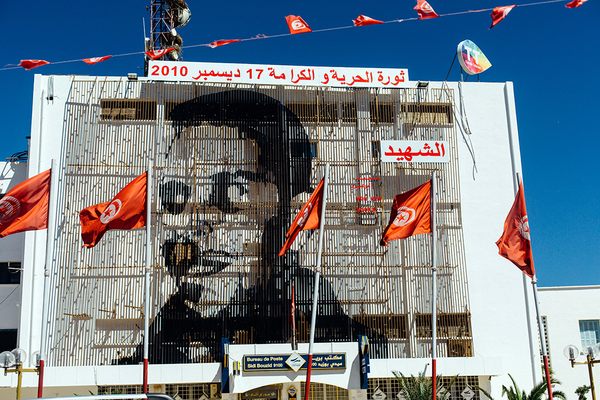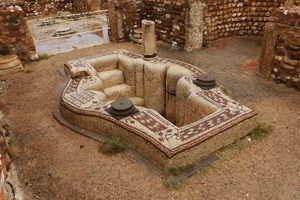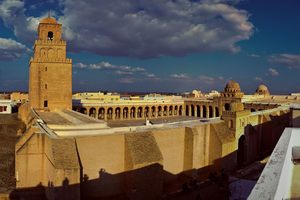About
On the main stretch of road running through Sidi Bouzid, a dusty interior town in Tunisia, sits an unusual statue: a concrete handcart, with an overlarge silhouette in panels across the facade of the building just behind it. The face on the building is both indistinct — derived from a small, blurry scrap of a photo, but also the only one the man's family had left. It's Mohamed Bouazizi, a young man who, on December 17, 2010, lit himself on fire, sparking the Tunisian revolution and what would later become the Arab Spring.
Bouazizi was living on the economic margins in 2010, like many of his fellow Tunisians. The country was languishing under dictator Zine el Abedin Ben Ali, who not only controlled speech and expression, but also held an iron grip on the business sector, funneling jobs and contracts to a corrupt circle close to his presidency. Bouazizi, the eldest son of a widowed mother, didn't even have the right connections to get a stall in the Central Market of his town to sell fruits and vegetables. He built his own handcart instead and sold his wares on a busy street corner along the main drag. He often faced harassment from the police and paid bribes to stay in business.
But on December 17, 2010, a policewoman stopped him, and, instead of taking his fruit as a fine, took his scales — the one thing he needed to do business. An argument ensued, and then, she slapped Bouazizi. He was humiliated, and furious. He went to the police station across the street to hold the policewoman responsible and get his scales back. They sent him away and so did the receptionist at the mayor's office. He finally went to the governor's office, which was across the street from his cart. The guards wouldn't allow him to enter.
In a fit of desperation and anger, Bouazizi poured lighter fluid all over himself and then flicked the wheel of his lighter. He wouldn't survive to see what his desperate action started—protests that grew from the interior to the coast and in 28 days, led to the ousting of Ben Ali after 23 years of dictatorship.
The monument in Sidi Bouzid was hastily built and is already deteriorating a bit, primarily because it has become the rallying point for any kind of political activity in the town. People often climb atop it to address crowds, and the cart is starting to wear down. But if you find yourself in this corner of Tunisia, take a moment to stand at this monument and look up at the hazy face of the young man who reshaped his country and the world.
Related Tags
Know Before You Go
The monument is spread across the block just past the main roundabout in the town when you are heading southwest. The Walea, the municipal building where Bouazizi set himself on fire, is the pink building on the right-hand side of the street as you're moving through the town from Kairouan.
Published
August 28, 2019


























